Calcium deficiency in cannabis plants
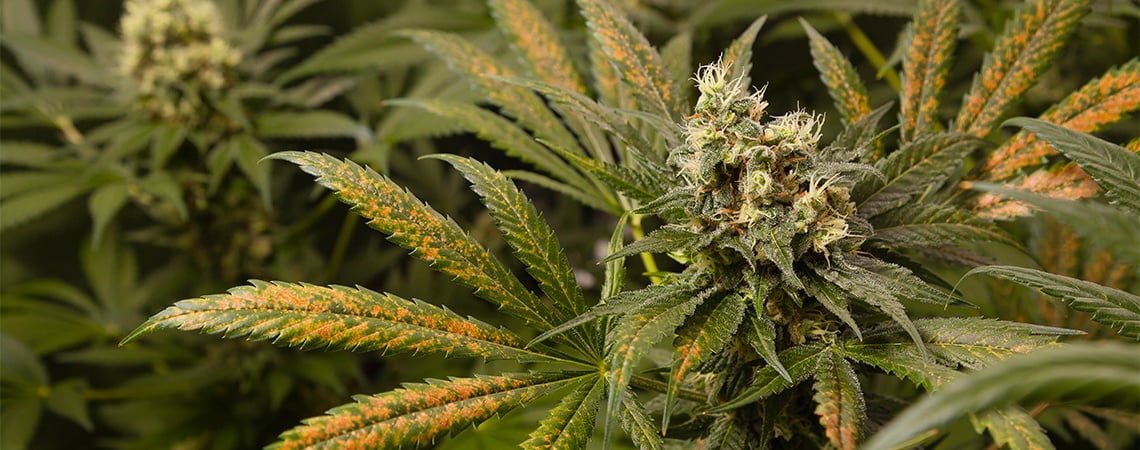
Brown spots, curling leaves, and weak buds? Your cannabis might be suffering from calcium deficiency. This guide shows you how to spot the signs, fix the issue, and prevent it from returning. That way, you can achieve bountiful, flavourful, and potent harvests every time!
Noticed some brown spots, curled leaves, and stunted growth? Your cannabis plants might be missing a key element: calcium. If you're growing at home and noticing strange changes in leaf and bud development, you could very well be dealing with cannabis calcium deficiency, a common but often misunderstood problem.
In this guide, we'll show you how to recognise early signs, confirm it's a calcium issue, and take clear, practical steps to restore your plant's health and maximise yields.
Early symptoms of calcium deficiency
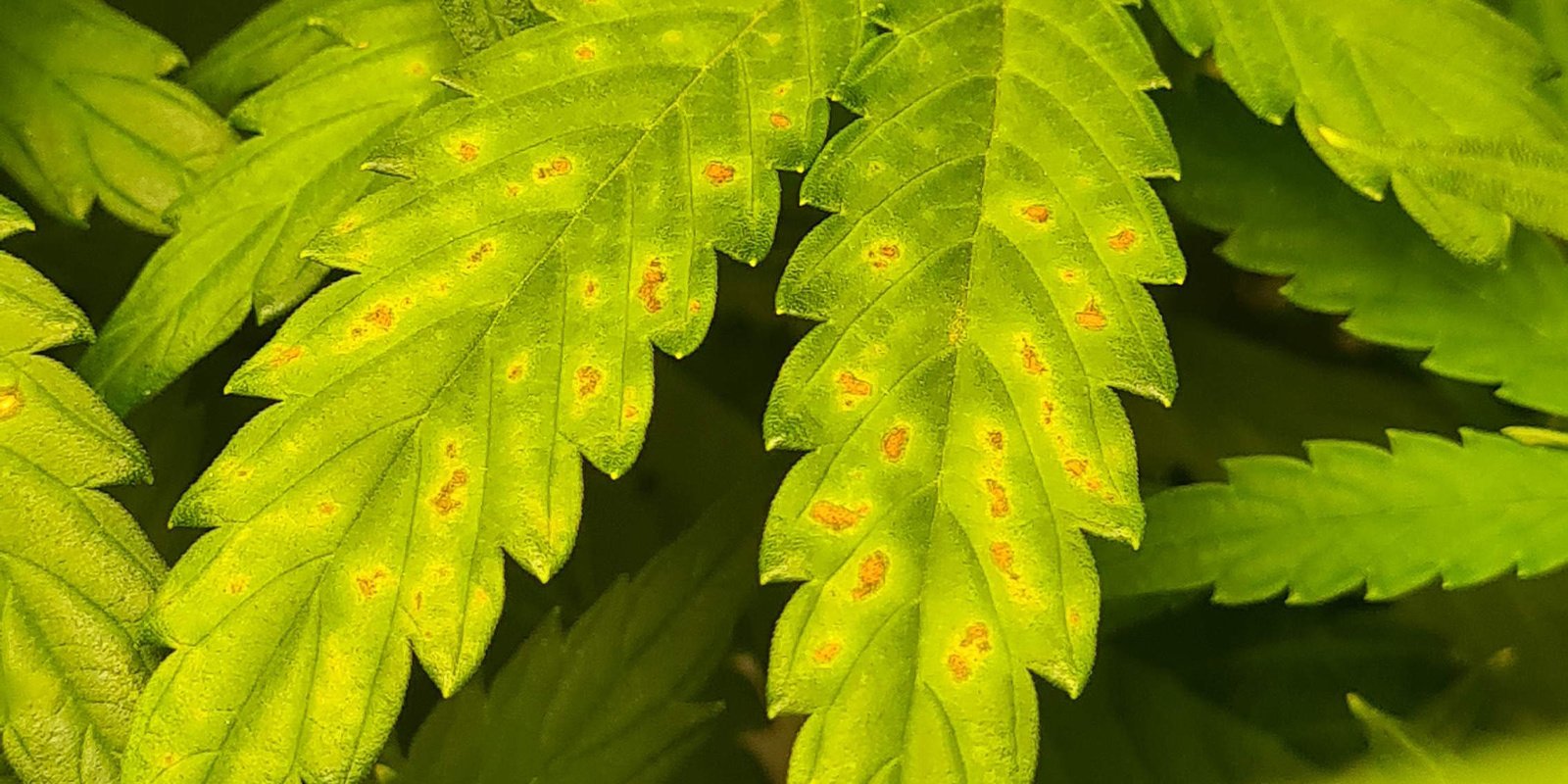
Catching the symptoms of a calcium deficiency early can make all the difference. Because calcium is an immobile nutrient (meaning the plant can't easily move it from one part to another), symptoms usually appear in new growth first, especially around the upper leaves and developing buds.
Common early signs
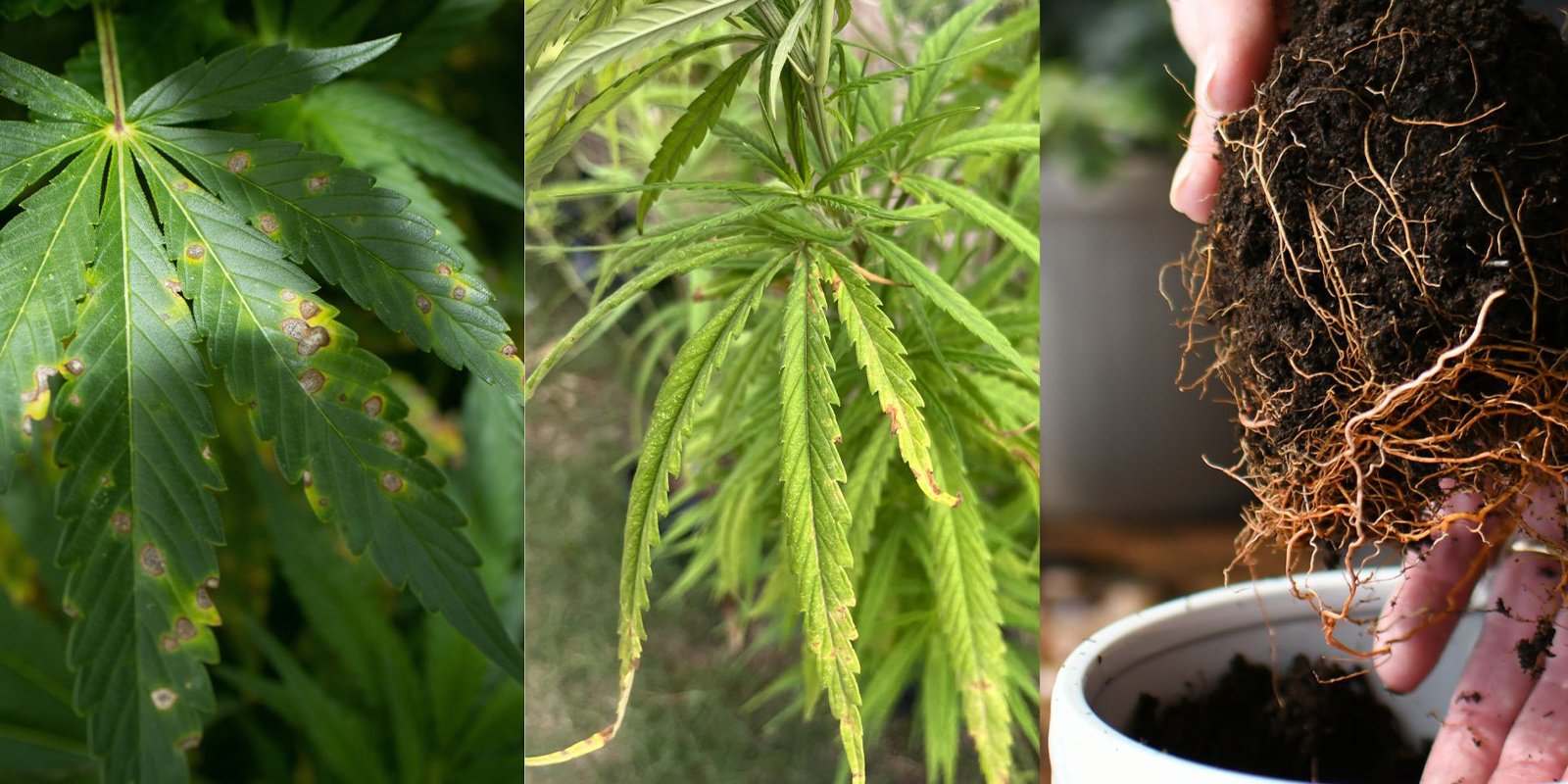
- Brown spots: The appearance of irregular, rust-coloured patches on young leaves is a common early sign of calcium deficiency. Unlike some other nutrient deficiencies, these spots may not follow a specific pattern and can spread quickly.
- Leaf curling and necrosis: Affected leaves may begin to curl at the edges or tips, eventually developing dry, brittle areas. In more severe cases, parts of the leaf can die off entirely, known as necrosis.
- Stunted roots and bud development: Healthy root growth is heavily reliant on calcium. Deficiency can lead to underdeveloped roots, limiting the plant's ability to take up water and nutrients. You may also notice slowed bud formation, with smaller, lighter flowers than expected.
Because these symptoms can resemble those caused by other issues, it's essential to cross-reference what you're seeing. For a broader look at related issues, check out our guide to identifying plant diseases and rule out other potential problems.
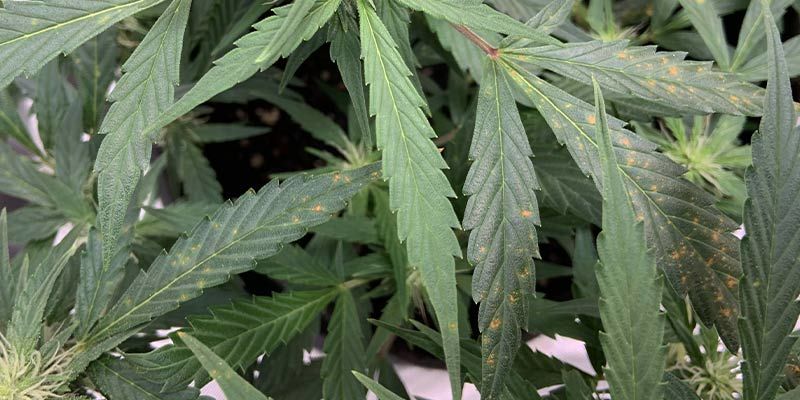
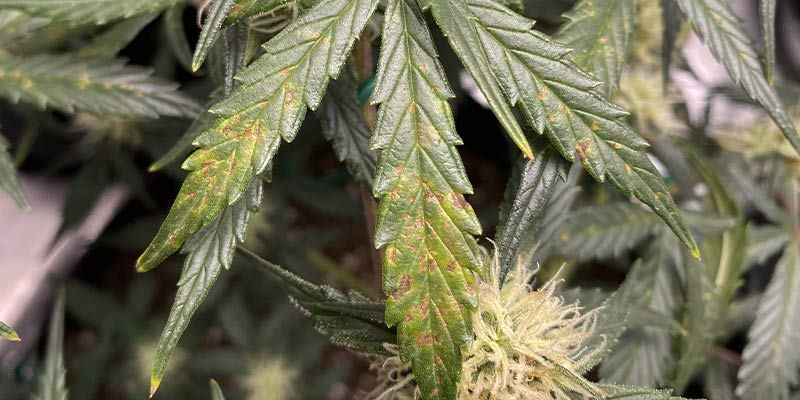
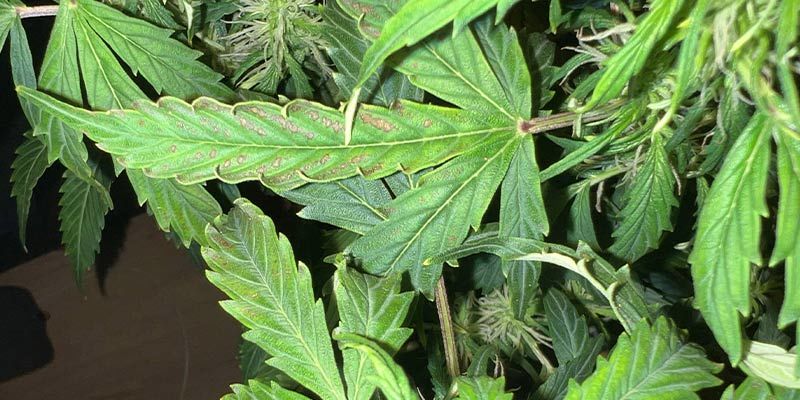
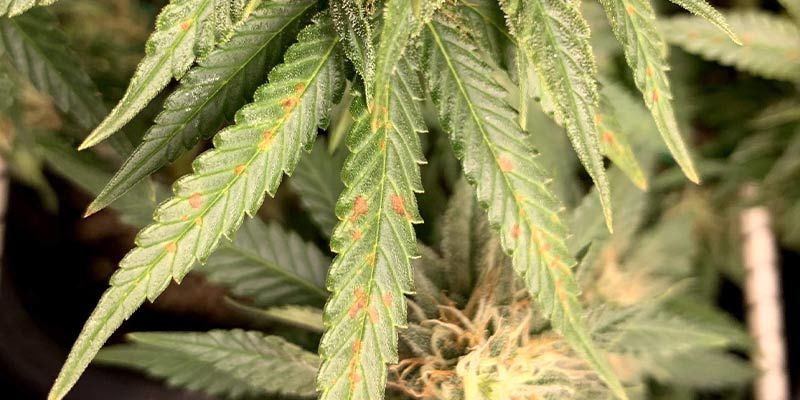
How to confirm it's a calcium deficiency
Building on the above, it's essential to rule out other causes that might mimic or even trigger symptoms of cannabis calcium deficiency. Proper diagnosis saves time, prevents overcorrecting, and ensures your plants get exactly what they need.
1. Rule out pH imbalance and nutrient lockout

Calcium is only available to cannabis plants within a specific pH range. If your growing medium is outside this sweet spot, your plants might not be absorbing calcium, even if it's present. In soil, calcium is best absorbed between 6.2 and 7.0; this pH range narrows to around 5.8 and 6.5 in a hydroponic or coco-based setup. A common cause of calcium deficiency is nutrient lockout, where the plant can't absorb specific nutrients due to poor pH balance or salt buildup from overfeeding.
2. Visual confirmation vs other deficiencies
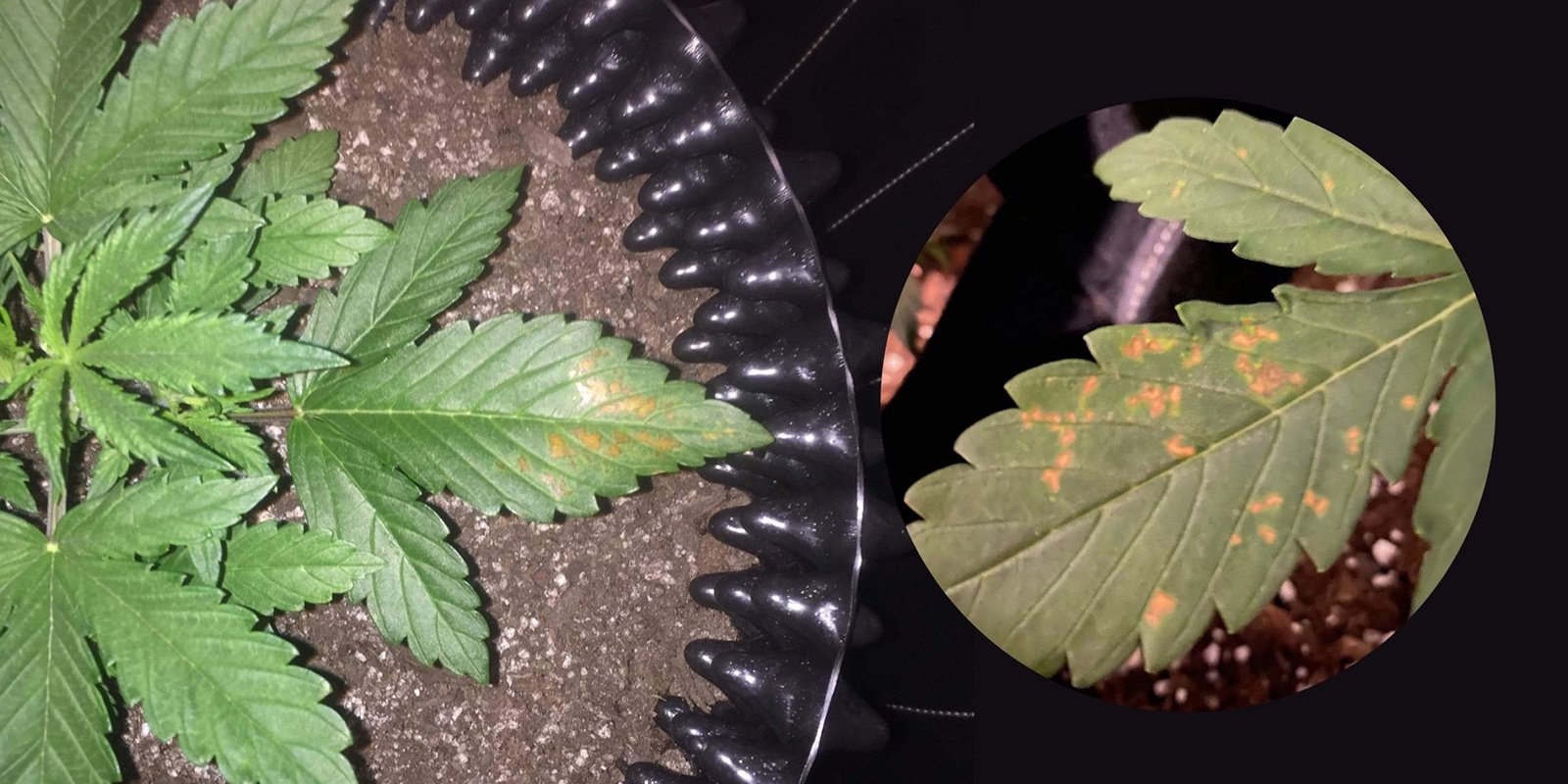
Calcium deficiency symptoms can resemble other issues, especially magnesium or zinc deficiencies. However, the key difference lies in where and how the symptoms appear. Calcium issues typically start on new growth, while magnesium deficiency affects older leaves first. Zinc problems, meanwhile, may cause leaf deformation and yellowing rather than spotting or necrosis.
3. Use a process of elimination
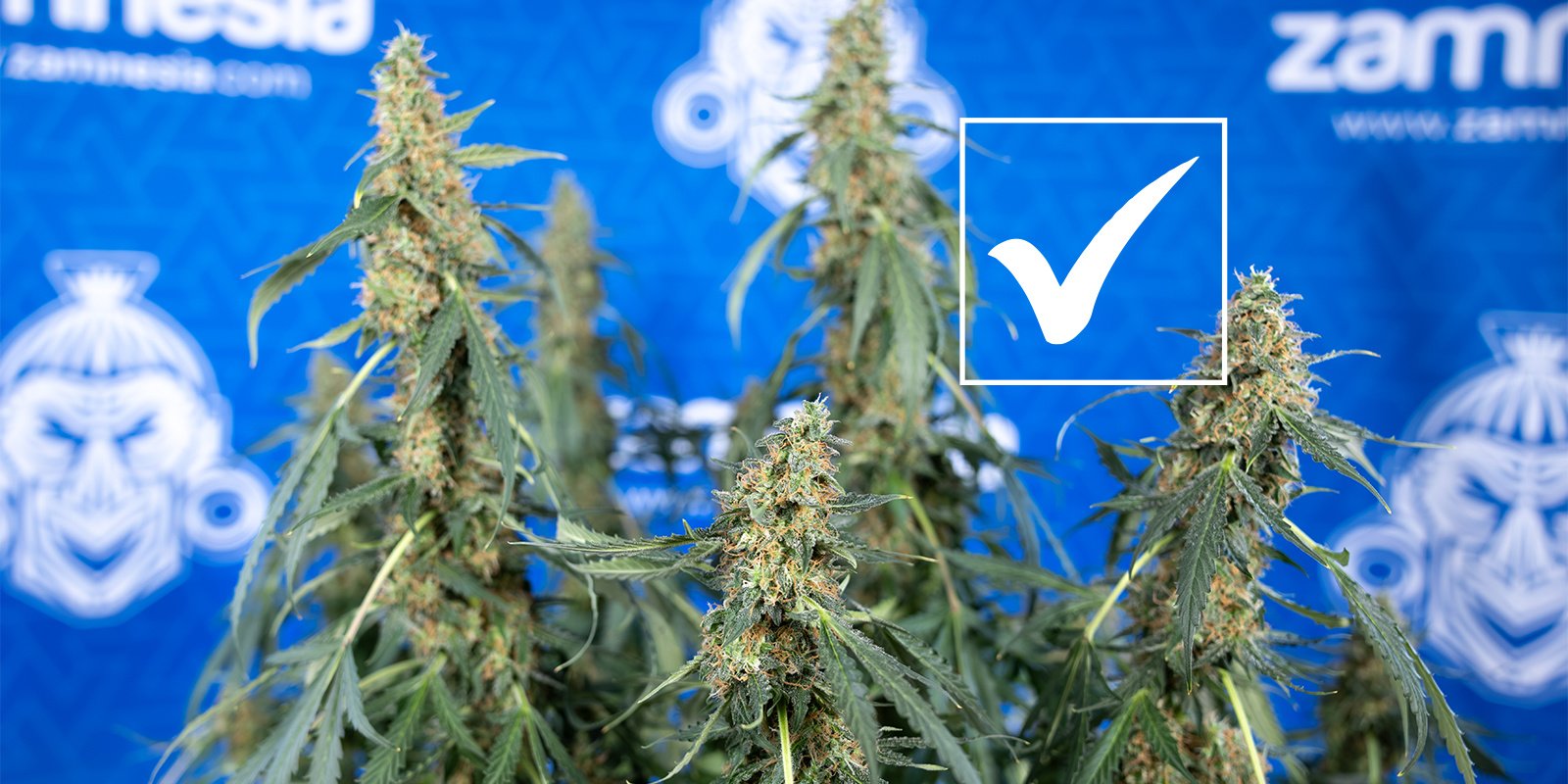
To accurately identify cannabis calcium deficiency, consider the following:
- Are you using RO (reverse osmosis) or soft water with little mineral content?
- Has your pH been stable and within the recommended range?
- Have you noticed slow growth or poor root development in addition to leaf symptoms?
Cross-checking these factors allows you to rule out the other possibilities and confirm calcium as the issue.
4. Use diagnostic tools
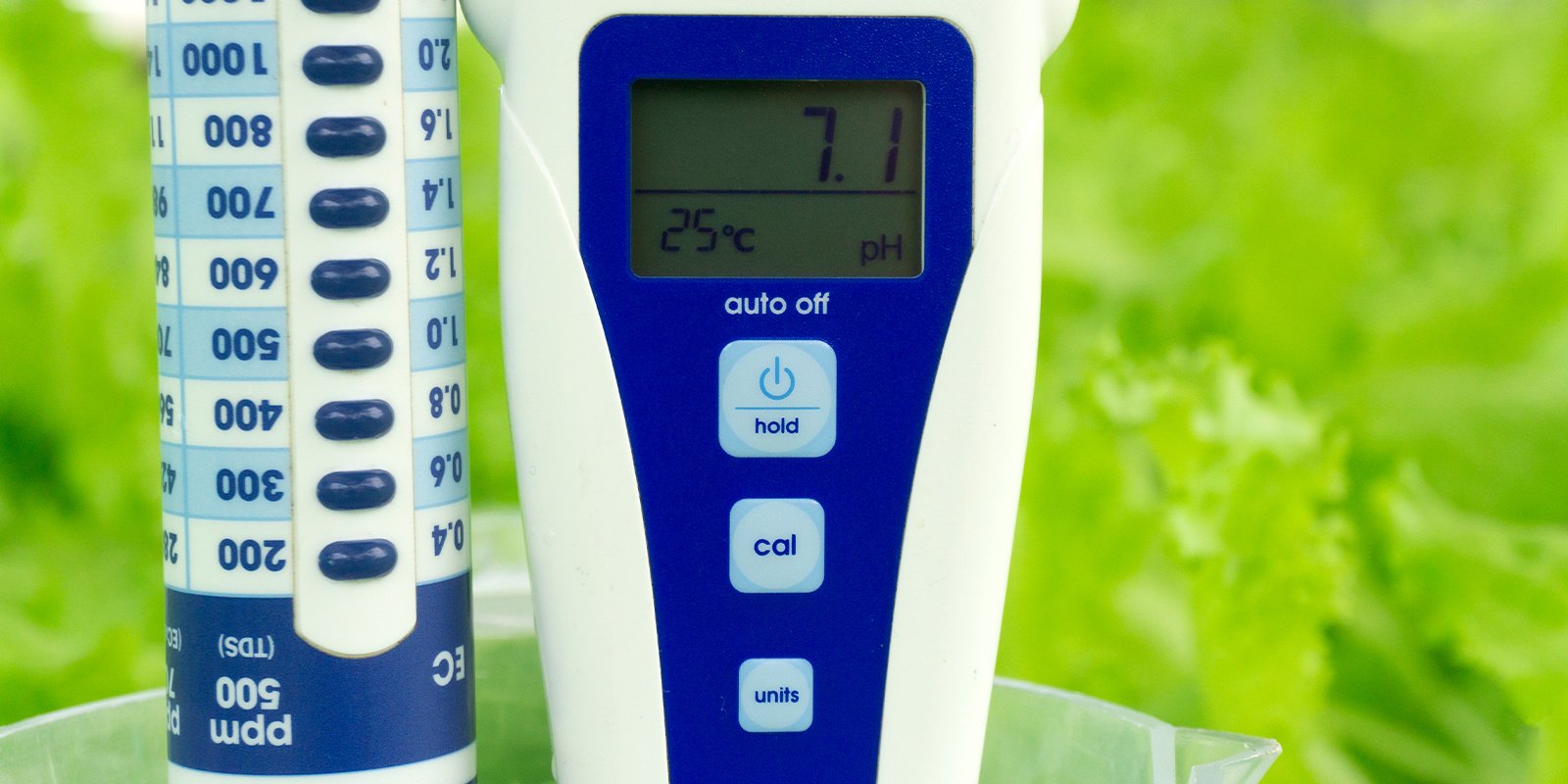
Investing in simple diagnostic tools can make troubleshooting much easier. A pH pen helps ensure your medium stays within the proper range, while an EC (electrical conductivity) meter allows you to monitor nutrient concentration and avoid salt buildup. Regular testing will help you maintain the perfect growing environment and catch deficiencies before they have the chance to spiral out of control.
Check out our nutrient deficiencies guide for a full breakdown of how to recognise and treat different nutrient problems.
Fixing calcium deficiency in cannabis
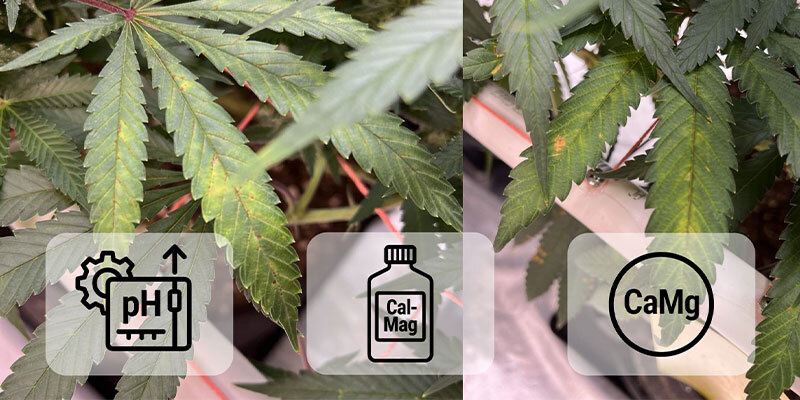
Once you've confirmed a cannabis calcium deficiency, prompt action is vital to getting your plants back on track. The right solution depends on your growing medium, water source, and how far the deficiency has progressed. Below are the most effective ways to fix the issue.
Adjusting pH levels
pH imbalance is one of the most common reasons cannabis can't absorb calcium, causing nutrient lockout. As mentioned, aim for a pH level between 6.2 and 7.0 for soil, and 5.8 and 6.5 for coco and hydro setups.
Use a pH pen or pH drops to regularly test your water and nutrient solution. If your pH is off, flush your system with clean, pH-balanced water, then resume feeding with adjusted nutrients.
Cal-Mag supplements
A Cal-Mag supplement is one of the most direct and reliable ways to address a cannabis calcium deficiency. These products contain a balanced mix of calcium, magnesium, and occasionally iron, all three of which often work in tandem.
For soil growers, use Cal-Mag once or twice weekly, depending on the severity of the deficiency. Choose a product compatible with your base nutrients and always follow dosing guidelines.
Due to the inert nature of the medium, calcium deficiencies are more common in hydro and coco setups. Therefore, a Cal-Mag supplement should be part of your regular feeding schedule, especially if you use RO or distilled water, which lacks natural mineral content.
Always mix supplements thoroughly and double-check your pH after adding them, as Cal-Mag products can shift the pH of your solution.
Dolomite lime
Dolomite lime is a slower-acting but highly effective solution for long-term calcium support, particularly in soil-grown plants. It adds calcium and magnesium and acts as a natural pH buffer to keep your medium stable.
To apply dolomite lime, mix 1–2 tablespoons per 4 litres of soil before planting, or gently work it into the topsoil around your existing plants. It takes roughly a week or two for the effects to become apparent, so it's not ideal for an emergency correction, but it works well as a preventative measure or maintenance tool.
Can I still use affected plants or buds?
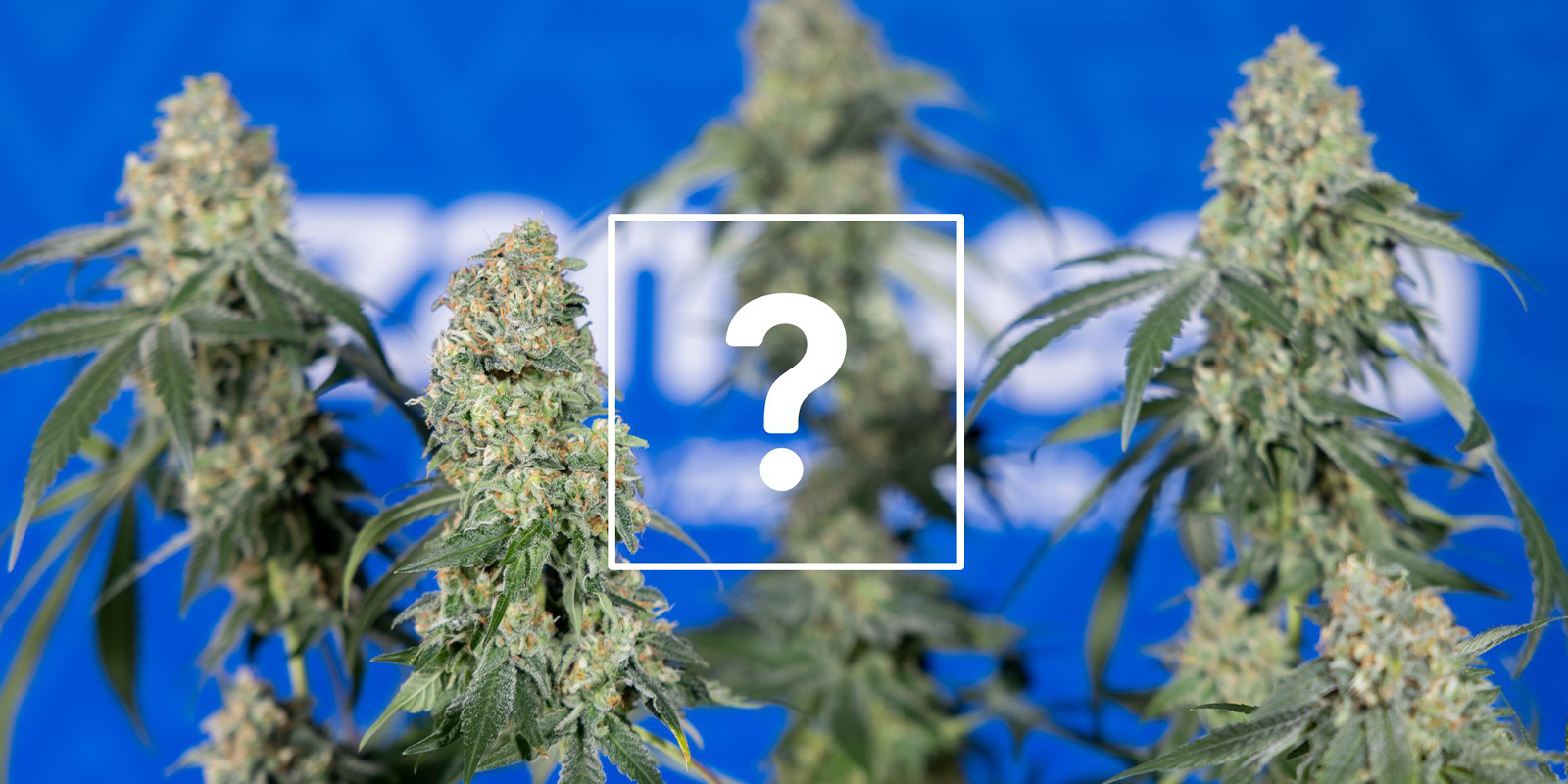
If you've experienced a cannabis calcium deficiency, you might be wondering if the potential damage caused will make your harvest unsafe to consume. The good news? In most cases, plants with mild to moderate calcium issues can still produce usable buds, especially if the deficiency is caught and corrected early.
Is it safe to consume?
Yes, buds from calcium-deficient plants are generally safe to smoke, vape, or extract as long as they haven't been exposed to harmful pathogens or mould. A calcium deficiency won't introduce any toxins or residues into the plant. However, always inspect your buds closely during trimming and drying. Remove any parts of the plant that appear dead, decayed, or mouldy, as these can pose health risks unrelated to the deficiency itself.
Impact on potency, yield, and flavour
While safety might not be a concern, quality is another story. Calcium plays a key role in flower development, and a prolonged deficiency can lead to:
- Smaller buds: Poor cell structure can lead to underdeveloped flowers that don't reach their full potential.
- Smaller yields: Especially if root development was affected, overall yield weight may be impacted.
- Reduced flavour/aroma: Stressed plants may not produce as many terpenes and other aromatic compounds.
The earlier you intervene, the better your chances of preserving both the quality and quantity of your harvest. For growers seeking dense, aromatic buds, avoiding a calcium deficiency altogether is always the best strategy.
How to prevent cannabis calcium deficiency
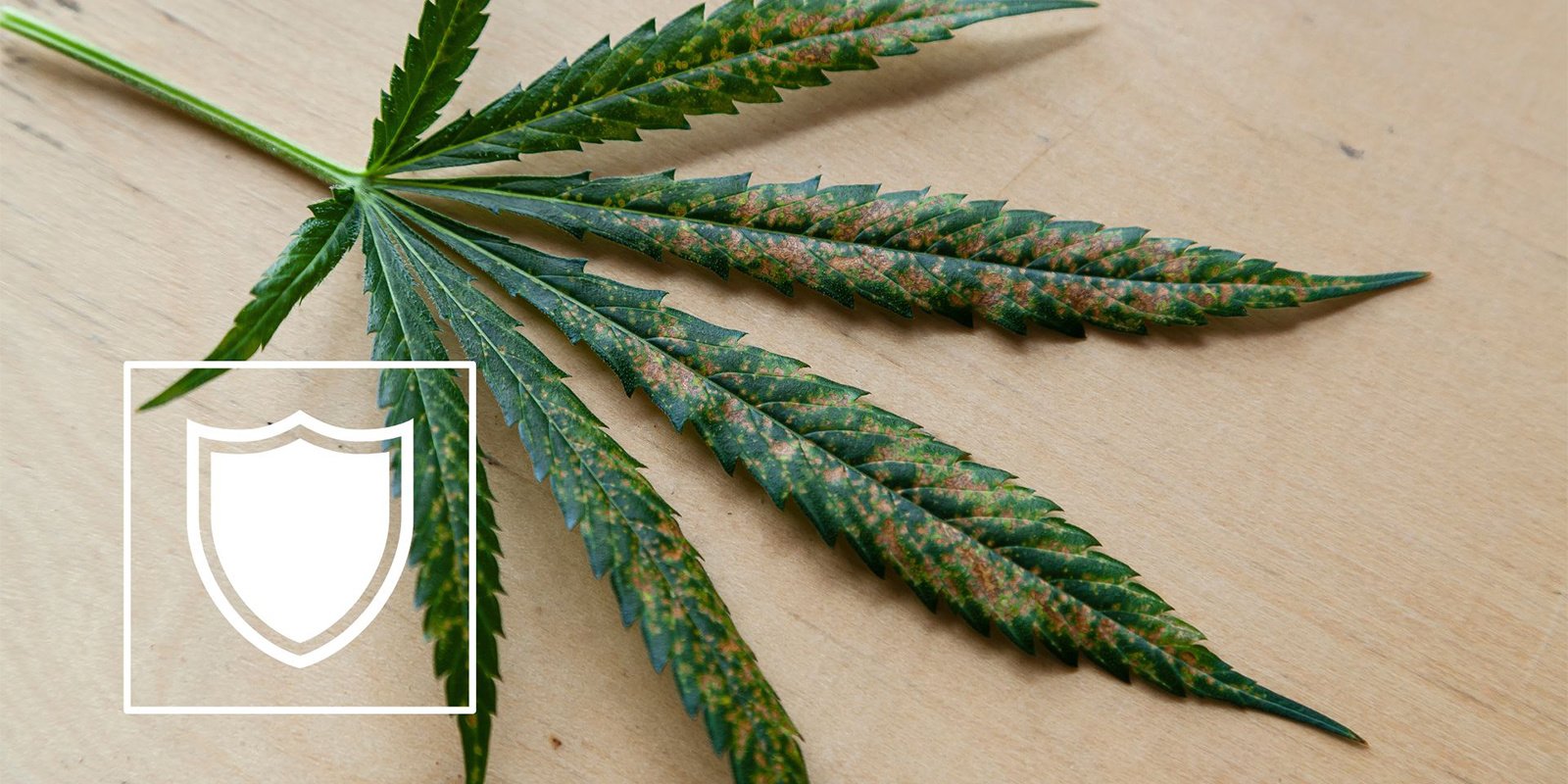
As with most plant problems, prevention is far easier and more effective than treatment. Taking proactive steps to maintain a balanced grow environment will significantly reduce your chances of encountering a calcium deficiency in future grows. Here's how to stay one step ahead of the issue.
Soil conditioning
Healthy, well-prepared soil is your first line of defence. Before planting, enrich your medium with calcium-rich amendments like dolomite lime, gypsum, or crushed oyster shells. These provide a slow-release source of calcium and help buffer pH levels, creating a stable environment for the roots. For long-term health, aim to refresh or rotate your soil between grows to prevent nutrient depletion.
Monitoring water and pH
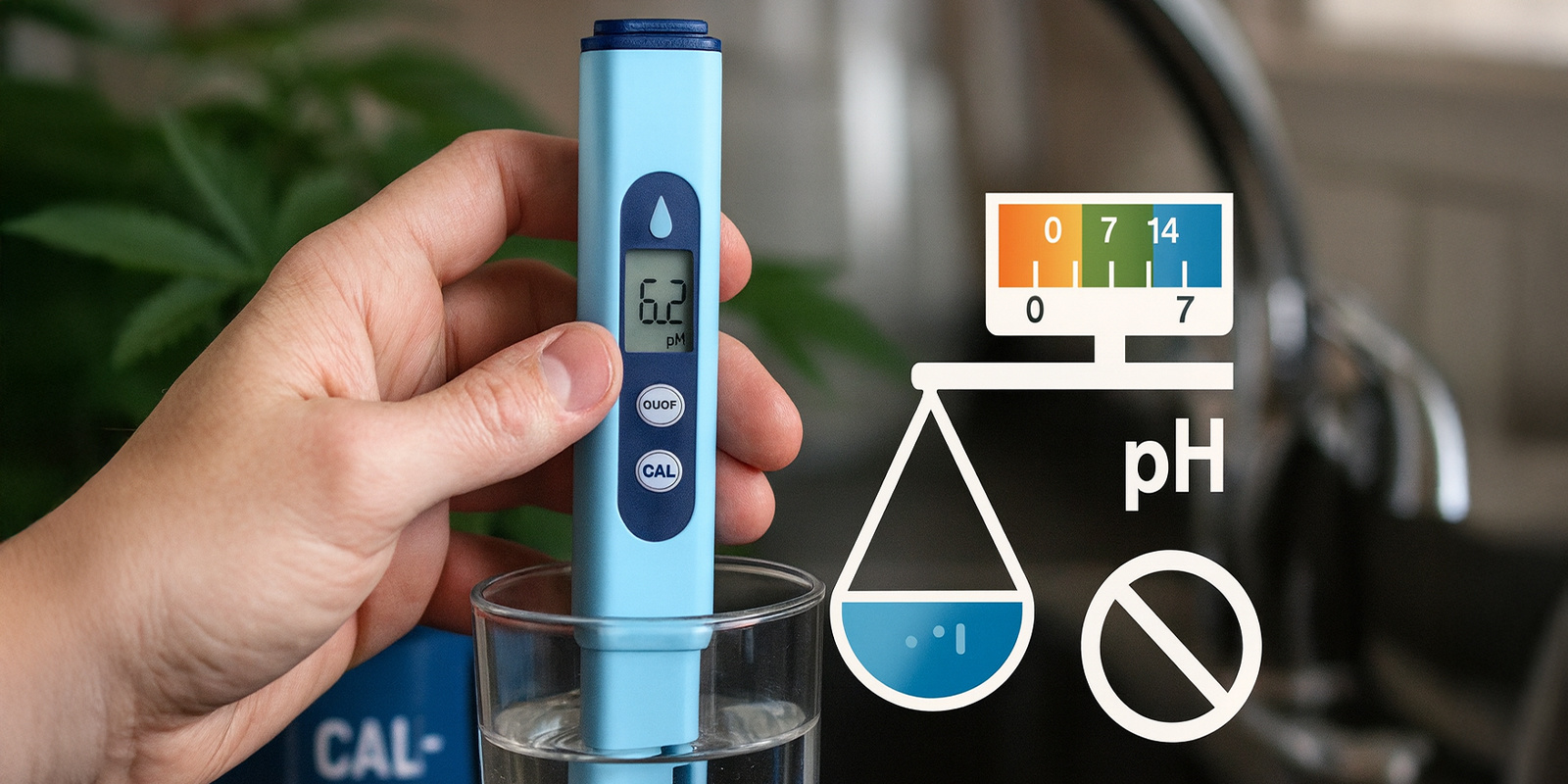
As you now know, your water source can significantly influence calcium availability. So if you're using soft water or reverse osmosis (RO) water, it's crucial to supplement accordingly. On the other hand, hard water may provide some calcium naturally, but the levels can be inconsistent.
Regularly test:
- Water pH: Keep it within the ideal range for your grow medium.
- Nutrient solution pH: Adjust as needed after mixing Cal-Mag or other supplements.
- EC levels: High salt buildup can block calcium uptake, even when it's present in the mix.
Maintaining a proper chemical balance in the substrate and water source ensures your plant can absorb calcium efficiently.
Balanced feeding schedules
Keeping your cannabis fed requires a well-rounded nutrient plan. During peak growth periods, especially in pre-flowering, calcium demands a little more, so make sure your nutrient mix includes it in appropriate amounts. Here are some top tips for your feeding schedule:
- Use a Cal-Mag supplement if needed, especially when growing in coco, hydro or using purified water.
- Don't overfeed! Excessive nutrients can cause a lockout or an imbalance.
- Follow your nutrient brand's feeding schedule, but adjust based on your plant's behaviour and signs.
By staying consistent and responsive to your plant's needs, you'll drastically reduce the risk of future calcium deficiencies and promote a healthy, high-yielding grow.
What is calcium, and why is it important?
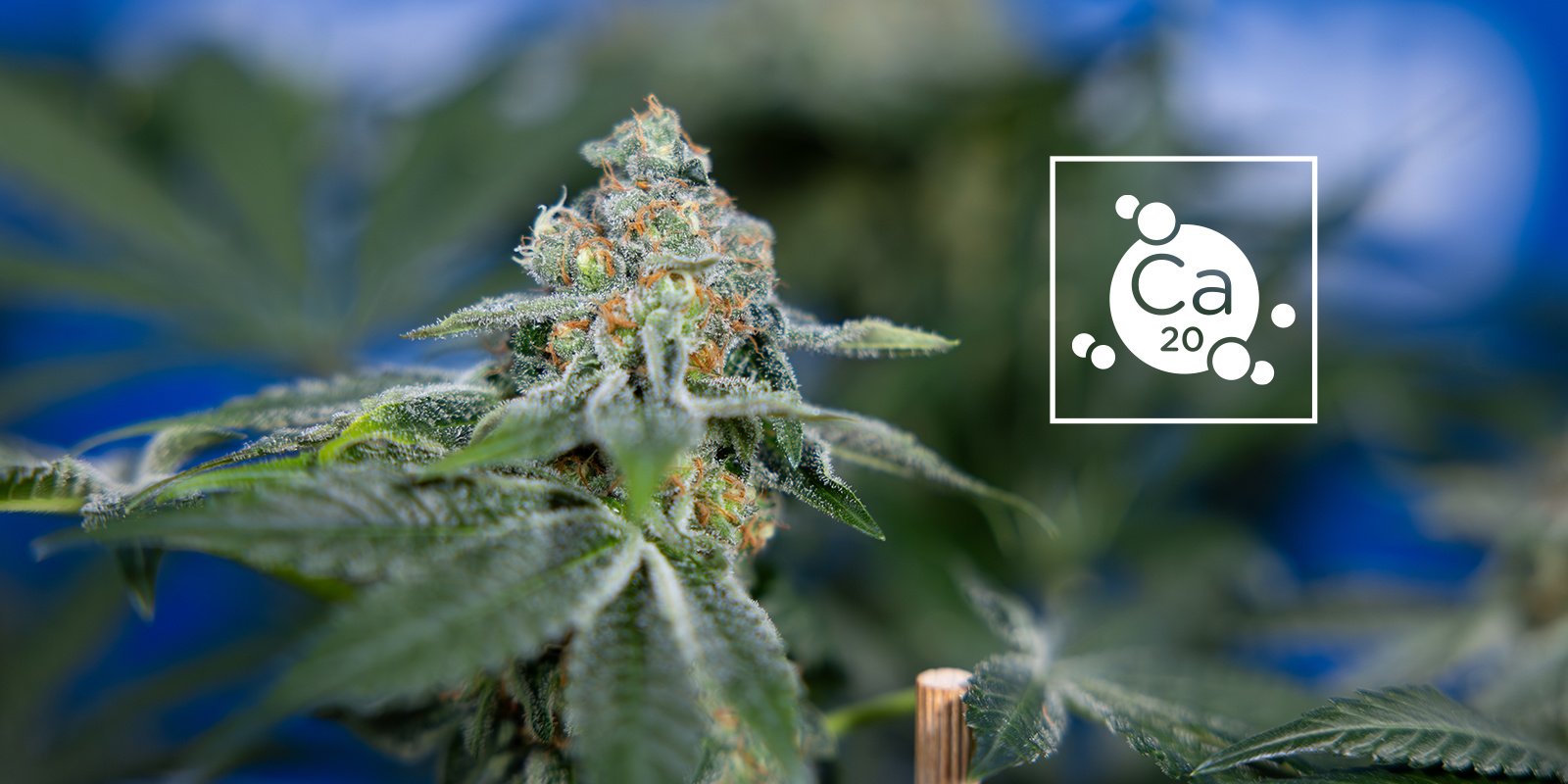
Calcium is a secondary nutrient that plays a critical role in the growth and development of cannabis plants. While it's needed in smaller amounts compared to the macronutrients nitrogen, phosphorus and potassium, calcium is absolutely essential for healthy cell structure, nutrient transport, and enzyme activity.
In cannabis plants, calcium helps build strong cell walls, allowing the plant to grow sturdy stems and resilient foliage. It also facilitates nutrient uptake and supports root development by aiding the movement of other minerals within the plant. During periods of rapid growth, especially in the pre-flowering and flowering stages, calcium becomes even more crucial as the plant demands higher levels of structural support and metabolic activity.
Without adequate levels of this essential nutrient, plant cell walls begin to weaken, resulting in soft, malformed leaves. In addition, nutrient transport becomes disrupted, which may mimic or even trigger other deficiencies, making accurate diagnosis more difficult.
Roots often develop poorly, reducing the plant's ability to absorb water and minerals effectively, and new growth typically becomes stunted and may display telltale signs such as brown spots, leaf curling, and necrotic (dead) edges. If no intervention is taken, this condition can seriously hinder your plant's ability to thrive and produce a healthy yield.
Calcium needs during the pre-flowering and flowering stages
As cannabis transitions from the vegetative stage into the pre-flowering phase, growth kicks into high gear. Plants begin to stretch rapidly, developing new stems, branches, and root systems to support upcoming bud production. During this phase, calcium, alongside magnesium, plays a vital role in building strong cellular structures and facilitating nutrient transport. Providing adequate calcium at this stage helps plants develop a more robust root network and sets the foundation for large, healthy buds later on.
In the flowering stage, calcium requirements typically decrease compared to earlier growth phases. However, this doesn't mean the plant can do without it; it's still essential to support ongoing cellular development and maintain the structural integrity of buds.
A cannabis calcium deficiency at this stage can lead to poor bud formation, reduced yields, and overall lower-quality harvests. To avoid this, it's important to stick to the recommended feeding schedule and monitor calcium levels closely, especially if you're growing in coco or hydro, where deficiencies can develop more quickly.
Calcium: Crucial to big buds
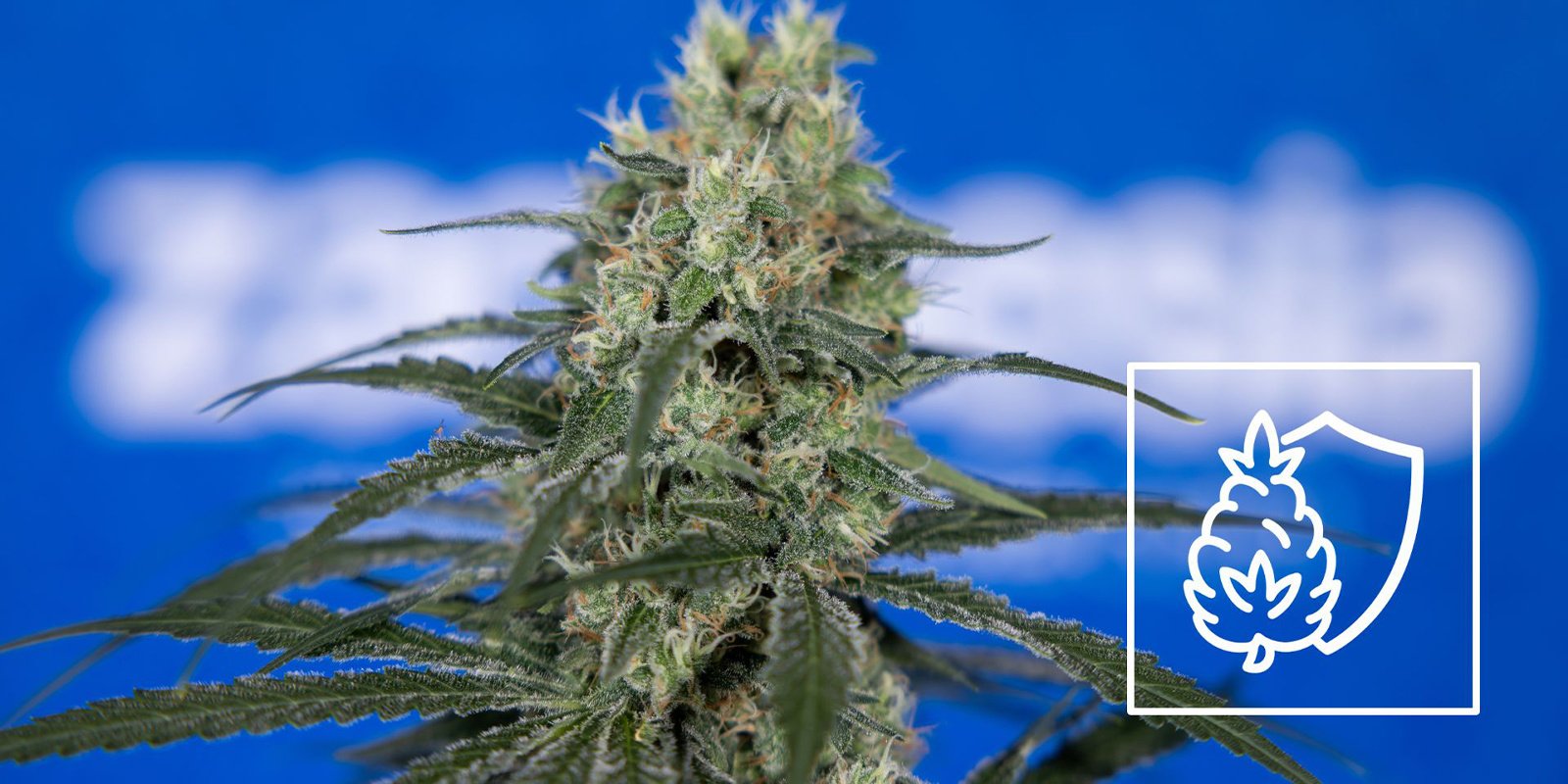
Calcium's role in cannabis cultivation cannot be understated. From strengthening cell walls to supporting root and bud development, it's a major element that underpins healthy growth and heavy yields.
If you notice brown spots on new leaves, curling or necrosis, or slowed bud formation, chances are you're dealing with a cannabis calcium deficiency. Adjusting your pH, supplementing with Cal-Mag, or improving soil quality can bring your plants back to full strength and prevent future setbacks.
Want to give your plants everything they need to thrive and flourish? Browse Zamnesia's full range of nutrient products and keep your grow on the path to success.





 United States
United States











